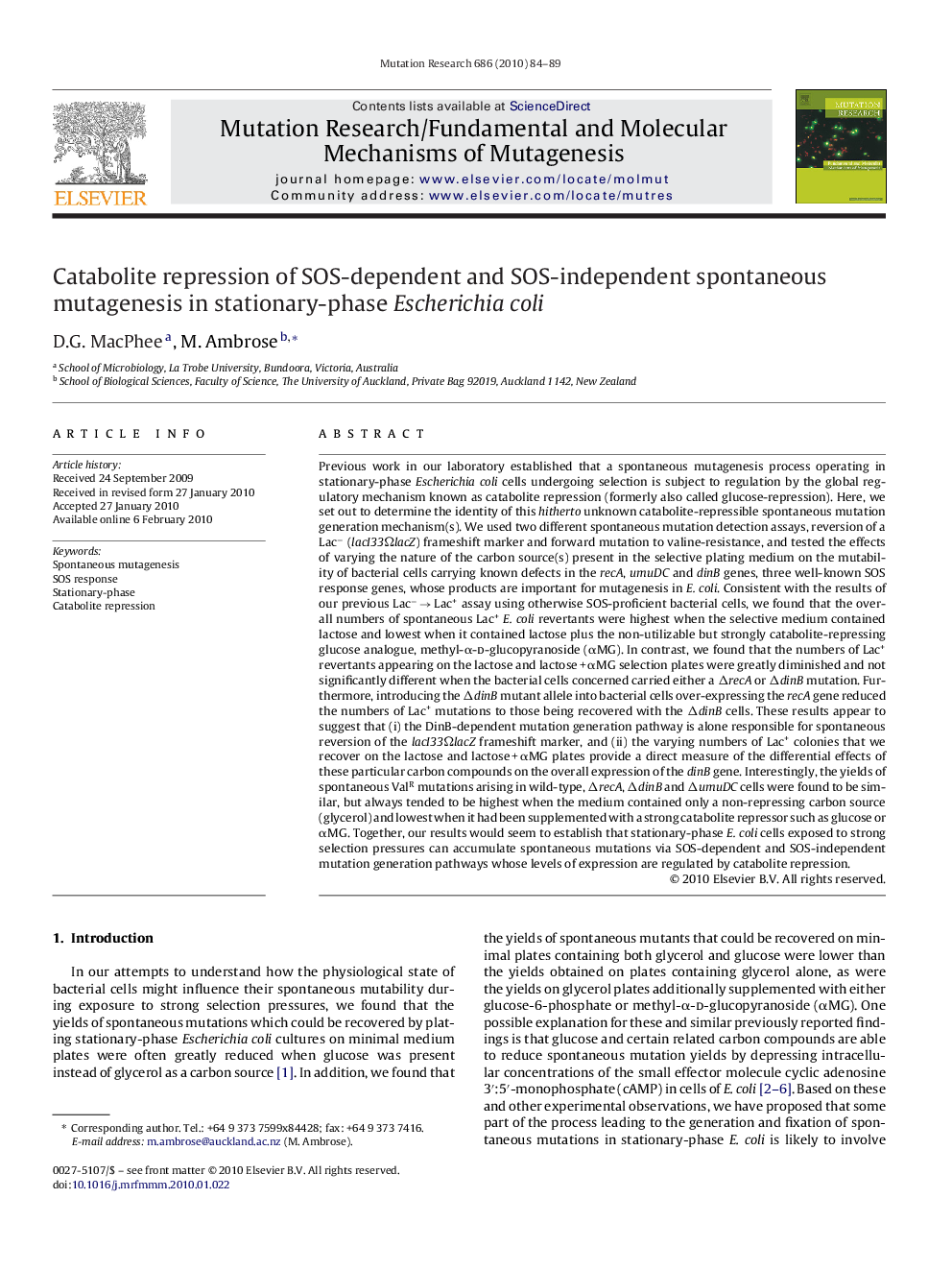| Article ID | Journal | Published Year | Pages | File Type |
|---|---|---|---|---|
| 2146865 | Mutation Research/Fundamental and Molecular Mechanisms of Mutagenesis | 2010 | 6 Pages |
Previous work in our laboratory established that a spontaneous mutagenesis process operating in stationary-phase Escherichia coli cells undergoing selection is subject to regulation by the global regulatory mechanism known as catabolite repression (formerly also called glucose-repression). Here, we set out to determine the identity of this hitherto unknown catabolite-repressible spontaneous mutation generation mechanism(s). We used two different spontaneous mutation detection assays, reversion of a Lac− (lacI33ΩlacZ) frameshift marker and forward mutation to valine-resistance, and tested the effects of varying the nature of the carbon source(s) present in the selective plating medium on the mutability of bacterial cells carrying known defects in the recA, umuDC and dinB genes, three well-known SOS response genes, whose products are important for mutagenesis in E. coli. Consistent with the results of our previous Lac− → Lac+ assay using otherwise SOS-proficient bacterial cells, we found that the overall numbers of spontaneous Lac+E. coli revertants were highest when the selective medium contained lactose and lowest when it contained lactose plus the non-utilizable but strongly catabolite-repressing glucose analogue, methyl-α-d-glucopyranoside (αMG). In contrast, we found that the numbers of Lac+ revertants appearing on the lactose and lactose + αMG selection plates were greatly diminished and not significantly different when the bacterial cells concerned carried either a ΔrecA or ΔdinB mutation. Furthermore, introducing the ΔdinB mutant allele into bacterial cells over-expressing the recA gene reduced the numbers of Lac+ mutations to those being recovered with the ΔdinB cells. These results appear to suggest that (i) the DinB-dependent mutation generation pathway is alone responsible for spontaneous reversion of the lacI33ΩlacZ frameshift marker, and (ii) the varying numbers of Lac+ colonies that we recover on the lactose and lactose + αMG plates provide a direct measure of the differential effects of these particular carbon compounds on the overall expression of the dinB gene. Interestingly, the yields of spontaneous ValR mutations arising in wild-type, ΔrecA, ΔdinB and ΔumuDC cells were found to be similar, but always tended to be highest when the medium contained only a non-repressing carbon source (glycerol) and lowest when it had been supplemented with a strong catabolite repressor such as glucose or αMG. Together, our results would seem to establish that stationary-phase E. coli cells exposed to strong selection pressures can accumulate spontaneous mutations via SOS-dependent and SOS-independent mutation generation pathways whose levels of expression are regulated by catabolite repression.
